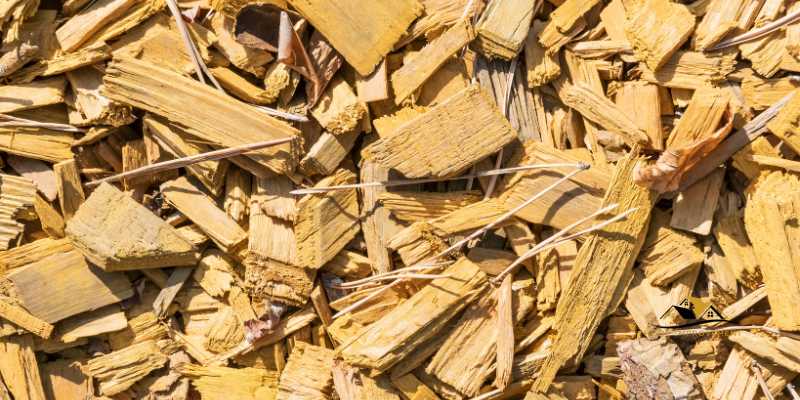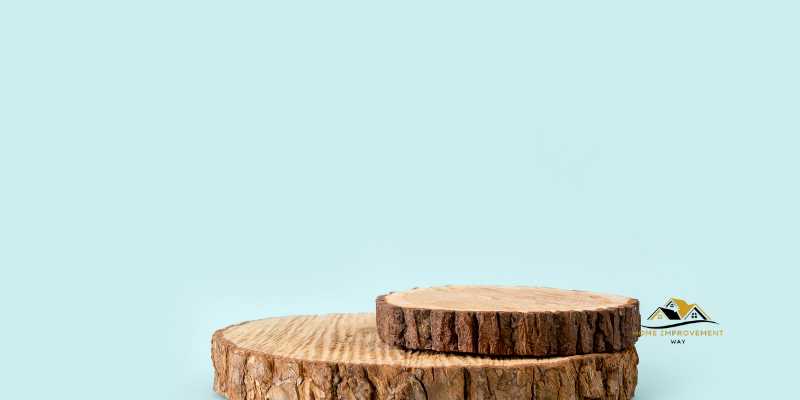Yes, you can smoke with pine wood, but it’s not recommended for smoking meats due to its resinous nature. Pine wood contains sap and terpenes, which can produce an unsavory flavor and may make some people sick when used for smoking.
While it is possible to use pine for smoking, it’s generally not ideal for achieving a clean and flavorful smoke. When it comes to smoking meats, it’s best to opt for hardwoods, fruitwoods, or nut woods for the best results.
These types of woods provide a cleaner burn and impart a more desirable flavor to the meat, ensuring a delicious end result. In this blog, we’ll explore the reasons why pine wood is not the best choice for smoking and discuss alternative woods that are better suited for this purpose.
The Pine Wood Smoking Debate
Smoking food with wood is a time-honored tradition that adds a delightful flavor to various dishes. However, when it comes to using pine wood for smoking, there’s a heated debate within the barbecue community. Let’s delve into the myths, the science, and the facts surrounding the use of pine wood for smoking.
Myths About Pine Wood
There are several myths surrounding the use of pine wood for smoking. Many believe that pine wood can impart a resinous and unpleasant taste to the food. Additionally, some argue that the sap and terpenes present in pine wood can create harmful compounds when burned. However, it’s essential to separate fact from fiction when it comes to using pine wood for smoking.
The Science Behind Wood Smoke
Wood smoke is a complex mixture of gases, liquids, and solids, each of which contributes to the flavor and aroma of smoked food. The type of wood used for smoking can significantly impact the final result. Different woods contain varying levels of lignin, cellulose, and hemicellulose, which produce distinct flavors when burned. Understanding the scientific composition of wood smoke is crucial in determining the suitability of pine wood for smoking.

Pine Wood Characteristics
Pine wood is not suitable for smoking as it contains resin and terpenes that can impart a bitter flavor to the food. Avoid using pine, cedar, or other softwoods for smoking meats to ensure a pleasant taste in your barbecue.
Resin Content And Its Effects
Pine wood is known for its high resin content, which can have both positive and negative effects when used for smoking. The resin in pine wood can create a strong smoky flavor, which is desirable for some types of meat. However, too much resin can also lead to a bitter taste and can be harmful to health.
When using pine wood for smoking, it’s important to use it in moderation and to avoid using wood that is too resinous. This can be achieved by selecting only well-seasoned pine wood and avoiding freshly cut or wet wood.
Comparison To Hardwoods
Compared to hardwoods, pine wood is generally not as desirable for smoking due to its high resin content and lower density. Hardwoods like oak, hickory, and mesquite are often preferred for smoking because they provide a more consistent and milder smoke flavor.
However, pine wood can still be used for smoking and can provide a unique flavor profile when used correctly. It’s important to experiment with different types of wood to find the flavor that works best for you.
Health Concerns With Pine Wood Smoke
Smoking with pine wood can pose health concerns due to the release of terpenes and sap, which can impart an unpleasant flavor and potentially make some individuals sick. It is recommended to avoid using softwoods like pine, fir, cedar, and spruce for smoking meats or other types of food.
Opt for dried hardwoods, fruitwoods, and nut woods instead for a safer and more flavorful smoking experience.
Chemical Composition Of Pine Smoke
The smoke from burning pine wood contains high levels of volatile organic compounds (VOCs), such as benzene, formaldehyde, and acetic acid. These compounds can negatively impact the quality of the air and pose potential health risks when inhaled.
Additionally, phenol, a toxic compound found in pine smoke, can adversely affect human health. When pine wood burns, it releases resinous sap that contains phenolic compounds, contributing to the harsh and potentially harmful smoke produced.
Potential Risks Of Smoking With Pine
Using pine wood for smoking can pose serious health risks due to the release of toxic compounds when the wood burns. Inhaling the volatile organic compounds (VOCs) present in pine smoke can irritate the respiratory system and exacerbate existing respiratory conditions.
Furthermore, the phenolic compounds released from the resinous sap of pine wood can negatively impact the flavor and safety of smoked food, posing a potential health hazard to consumers.
Flavor Profile: Pine Vs. Traditional Woods
While pine wood can technically be used for smoking, it is not recommended due to its high resin content which can lead to an unpleasant taste in the food. It’s best to stick with traditional woods like hardwoods, fruitwoods, and nut woods for a better flavor profile.
Taste Differences
When it comes to smoking meat, the type of wood you use can make a significant difference in the flavor profile of your food. Pine wood is not a traditional smoking wood, and it can impart a unique taste to your meat that may not be to everyone’s liking.
Compared to traditional woods like hickory, mesquite, and oak, pine wood has a distinct resinous flavor that can be overpowering if used in large quantities. The flavor can also be described as slightly sweet and fruity, with a hint of pine aroma.
If you’re looking to experiment with the flavor of pine wood, it’s best to use it in combination with other woods to balance out the taste. Pine wood pairs well with milder woods like apple or cherry, which can help to tone down the resinous flavor and provide a more well-rounded taste.
Impact On Meat Quality
While pine wood can add an interesting flavor to your meat, it’s important to note that it may not be the best option for smoking. Pine wood contains resin and sap, which can cause the wood to burn at a higher temperature than traditional woods.
This higher temperature can result in uneven cooking and can potentially dry out your meat. Additionally, the resin and sap can leave a sticky residue on your smoker, which can be difficult to clean.
In conclusion, while you can smoke with pine wood, it’s best to use it in combination with other woods and in moderation to avoid overpowering the flavor of your meat. If you’re looking for a traditional smoking wood that will provide consistent results, stick with options like hickory, mesquite, and oak.
Suitable Wood Types For Smoking
When it comes to smoking meats and other foods, the type of wood you use plays a crucial role in the flavor and aroma of your dishes. Not all wood is suitable for smoking, as some can give off unpleasant flavors or even be harmful to consume. In this section, we will explore the recommended hardwoods, as well as fruit and nut tree woods, that are perfect for smoking.
Recommended Hardwoods
Hardwoods are known for their dense and sturdy nature, making them ideal for smoking. They burn slowly and evenly, providing a consistent source of smoke throughout the cooking process. Here are some of the recommended hardwoods for smoking:
- Oak
- Hickory
- Mesquite
- Pecan
- Apple
- Cherry
These hardwoods offer a range of flavors, from mild to strong, allowing you to experiment and find the perfect wood for your preferred taste.
Fruit And Nut Tree Woods
Another category of woods that are great for smoking are those derived from fruit and nut trees. These woods impart a unique and delightful flavor to your smoked dishes. Here are some popular fruit and nut tree woods:
| Wood Type | Flavor Profile |
|---|---|
| Apple | Sweet and fruity |
| Cherry | Mild and slightly sweet |
| Peach | Sweet and fragrant |
| Pecan | Rich and nutty |
These fruit and nut tree woods are versatile and can be used on their own or in combination with other hardwoods to create unique flavor profiles.
It’s important to note that certain woods, such as pine, cedar, and cypress, should never be used for smoking as they can release harmful compounds and impart unpleasant flavors to your food. Stick to the recommended hardwoods and fruit/nut tree woods for the best smoking experience.
Now that you know the suitable wood types for smoking, you can confidently enhance the flavors of your smoked dishes and impress your friends and family with delicious barbecue creations.
Expert Opinions On Pine Wood Smoking
Expert opinions on pine wood smoking provide valuable insights for BBQ enthusiasts and cooking aficionados. Let’s delve into what professional chefs and the BBQ community have to say about smoking with pine wood.
Professional Chefs’ Insights
Professional chefs emphasize using dried hardwoods, fruitwoods, and nut woods for smoking due to their superior flavor profiles. Softwoods like pine and cedar are discouraged for smoking as they contain terpenes and sap that can affect the taste of the food.
Bbq Community Perspectives
- Softwoods such as pine, fir, cedar, and spruce are generally avoided by the BBQ community for smoking due to their resinous nature.
- Avoid using EASTERN CEDAR, CYPRESS, ELM, EUCALYPTUS, SASSAFRAS, LIQUID AMBER, REDWOOD, FIR, SPRUCE, or SYCAMORE when smoking meats or other foods.
- For optimal results, choose hardwoods over softwoods to enhance the flavor of your smoked dishes.
Alternatives To Pine For Smoking
When it comes to smoking meats or other foods, it’s important to choose the right type of wood to enhance the flavor without any harmful effects. While pine wood is not recommended for smoking due to its high resin content, there are several eco-friendly alternatives that can provide delicious smoke flavors for your BBQ.
Eco-friendly Options
When selecting wood for smoking, consider using hardwoods like oak, hickory, or fruitwoods such as apple or cherry. These woods are dense, burn cleanly, and impart a rich, smoky flavor to your food without overpowering it.
Creating Flavorful Smoke Blends
To create unique smoke blends, you can experiment with combining different types of woods. For example, mixing applewood with a bit of maple can add a subtle sweetness to your smoked dishes, while blending hickory with cherry wood can create a robust and slightly sweet flavor profile.
Safe Smoking Practices
Avoid using pine wood for smoking, as it contains resin and may impart an unpleasant flavor to your food. Opt for hardwoods, fruitwoods, or nut woods instead for safer smoking practices.
Selecting The Right Wood
When smoking food, choose hardwoods like oak or fruitwoods for best results.
Ensuring Food Safety
Avoid softwoods such as pine and cedar, as they can impart a bitter taste.
Always use clean, untreated wood for smoking to prevent harmful chemicals from contaminating your food.
Remember to soak wood chips before use to control the rate of burning and smoke production.

Frequently Asked Questions
Is Pine Safe To Smoke Out Of?
No, pine is not safe to smoke out of when it comes to smoking meats or other types of food. Pine contains terpenes and sap that can leach an unsavory flavor into the food and make some people sick. It is recommended to avoid using pine, cedar, cypress, elm, eucalyptus, sassafras, sycamore, liquid amber, fir, spruce, or redwood for smoking.
Stick to dried hardwoods, fruitwoods, and nut woods for best results.
What Wood Should You Not Smoke With?
Avoid using Eastern Cedar, Cypress, Elm, Eucalyptus, Sassafras, Pine, Redwood, Fir, Spruce, or Sycamore for smoking.
Can You Barbecue With Pine Wood?
No, you should not barbecue with pine wood. Pine wood contains terpenes and sap, which can give an unpleasant flavor to your food. It is best to use dried hardwoods, fruitwoods, and nut woods for cooking on a barbecue. Avoid softwoods like pine, redwood, fir, cedar, and cypress.
Can You Use Pine To Smoke Fish?
No, you should not use pine to smoke fish or any other type of meat. Pine wood contains terpenes and sap that can impart an unpleasant flavor to the food and may even make some people sick. It is best to use dried hardwoods, fruitwoods, and nut woods for smoking, as they provide better flavors.
Conclusion
While pine wood may be readily available, it is not recommended for smoking meats or other types of food. Pine contains terpenes and sap that can create an unpleasant flavor and potentially make people sick. It is best to opt for dried hardwoods, fruitwoods, and nut woods for a clean and flavorful smoking experience.
Remember to avoid using softwoods like pine, fir, cedar, and spruce to ensure the best results for your barbecue.

